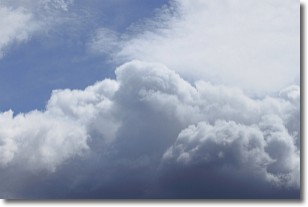Weather Alert in Michigan
Air Quality Alert issued July 30 at 8:25AM EDT by NWS Marquette MI
AREAS AFFECTED: Keweenaw; Ontonagon; Houghton; Baraga; Marquette; Alger; Luce; Gogebic; Iron; Dickinson; Menominee; Delta; Southern Schoolcraft; Southern Houghton; Northern Schoolcraft
DESCRIPTION: The Michigan Department of Environment, Great Lakes, and Energy (EGLE) has issued an Air Quality Advisory for elevated levels of fine particulates (PM2.5) across the state of Michigan. Pollutants are expected to be in the Unhealthy for Sensitive Groups (USG, Orange AQI) range Wednesday and Thursday with some locations reaching the Unhealthy (Red AQI) range. The alert is in effect for the following Michigan Counties, Keweenaw, Menominee, Dickinson, Iron, Marquette, Baraga, Northern Houghton, Southern Schoolcraft, Ontonagon, Delta, Gogebic, Luce, Alger, Northern Schoolcraft, and Southern Houghton. Smoke from Canadian wildfires moved into the Upper Peninsula Tuesday and into parts of the northern Lower Peninsula Wednesday morning. Model show the plume continuing its southern trek across the state with smoke expected to linger across the region through Thursday. As the smoke moves in, PM2.5 concentrations in the Unhealthy for Sensitive Groups (USG) range will expand south, while concentrations of PM2.5 in the Unhealthy range are more likely across northern areas. It is recommended that, when possible, you avoid strenuous outdoor activities, especially those with heart disease and respiratory diseases such as asthma. Monitor for symptoms such as wheezing, coughing, chest tightness, dizziness, or burning in nose, throat, and eyes. Reduce or eliminate activities that contribute to air pollution, such as outdoor burning, and use of residential wood burning devices. Keep windows closed overnight to prevent smoke from getting indoors and, if possible, run central air conditioning with MERV-13 or higher rated filters. For up-to-date air quality data for Michigan visit the MiAir site at https://air-egle.hub.arcgis.com. For further information, please see EPA's Air Now site for up-to- date air quality data at https://www.airnow.gov. For further health information, please see MDHHS' Wildfire Smoke and Your Health site at https://www.michigan.gov/mdhhs/safety-injury- prev/environmental-health/your-health-and-wildfire-smoke.
INSTRUCTION: N/A
Want more detail? Get the Complete 7 Day and Night Detailed Forecast!
Current U.S. National Radar--Current
The Current National Weather Radar is shown below with a UTC Time (subtract 5 hours from UTC to get Eastern Time).

National Weather Forecast--Current
The Current National Weather Forecast and National Weather Map are shown below.

National Weather Forecast for Tomorrow
Tomorrow National Weather Forecast and Tomorrow National Weather Map are show below.

North America Water Vapor (Moisture)
This map shows recent moisture content over North America. Bright and colored areas show high moisture (ie, clouds); brown indicates very little moisture present; black indicates no moisture.

Weather Topic: What are Nimbostratus Clouds?
Home - Education - Cloud Types - Nimbostratus Clouds
 Next Topic: Precipitation
Next Topic: Precipitation
A nimbostratus cloud is similar to a stratus cloud in its formless,
smooth appearance. However, a nimbostratus cloud is darker than a stratus cloud,
because it is thicker.
Unlike a stratus cloud, a nimbostratus cloud typically brings with it the threat
of moderate to heavy precipitation. In some cases, the precipitation may evaporate
before reaching the ground, a phenomenon known as virga.
Next Topic: Precipitation
Weather Topic: What is Rain?
Home - Education - Precipitation - Rain
 Next Topic: Shelf Clouds
Next Topic: Shelf Clouds
Precipitation in the form of water droplets is called rain.
Rain generally has a tendency to fall with less intensity over a greater period
of time, and when rainfall is more severe it is usually less sustained.
Rain is the most common form of precipitation and happens with greater frequency
depending on the season and regional influences. Cities have been shown to have
an observable effect on rainfall, due to an effect called the urban heat island.
Compared to upwind, monthly rainfall between twenty and forty miles downwind of
cities is 30% greater.
Next Topic: Shelf Clouds
Current conditions powered by WeatherAPI.com




